Farcaster is a decentralized social media protocol based on blockchain technology, focusing on interoperability, user autonomy, and privacy protection.
By: Chaguanxiaoer
1. Project Introduction
Farcaster is a decentralized social media protocol based on blockchain technology, focusing on interoperability, user autonomy, and privacy protection.
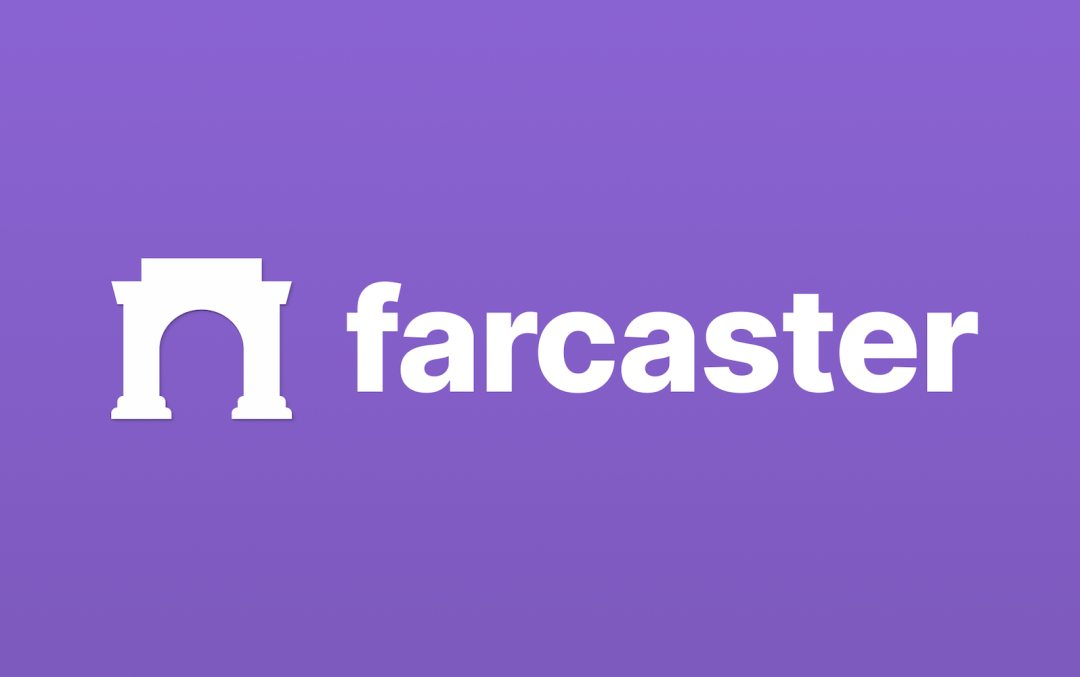
Unlike traditional social networks, Farcaster does not rely on central servers, but is built on the extended network of the Optimism blockchain infrastructure, allowing developers to use pre-developed functions of its smart contracts to build diverse decentralized social media applications, while ensuring transparency, security, and decentralization.
Farcaster aims to create an uncensored environment, allowing users to fully control their data and audience. Through a sufficiently decentralized network architecture, Farcaster allows users to control their social graph and interact across different applications on the network through a single identity. This platform is similar to a unified platform where users can connect social applications similar to Instagram and Facebook through a decentralized ID. This way, even if an application imposes restrictions, users still retain their identity and can seamlessly migrate their connections to other applications on the network. In addition, Farcaster is open source and does not require permission, allowing anyone to build applications through API access or other means.
Since its launch, according to data from Dune Analytics, Farcaster has attracted over 200,000 users, including notable users Vitalik Buterin and Jesse Pollack, the founder of Base Network. The total revenue of the project has exceeded $1.2 million, currently reaching $1,229,371.
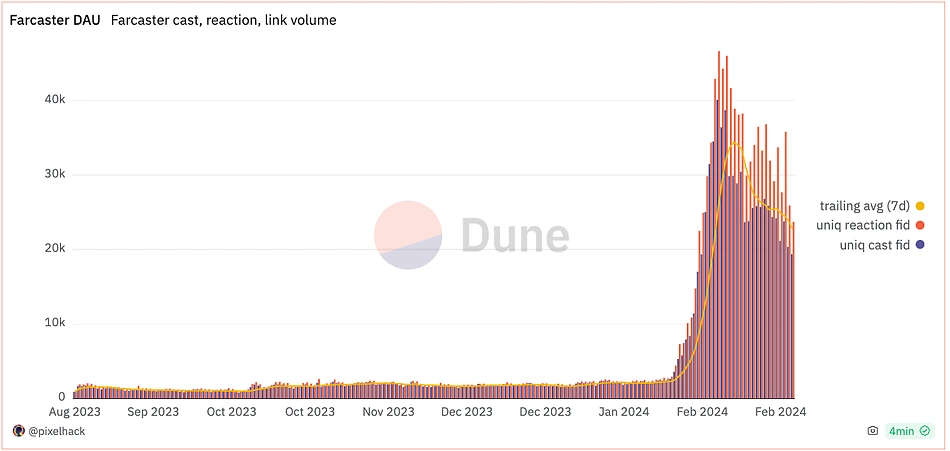
2. Working Principle
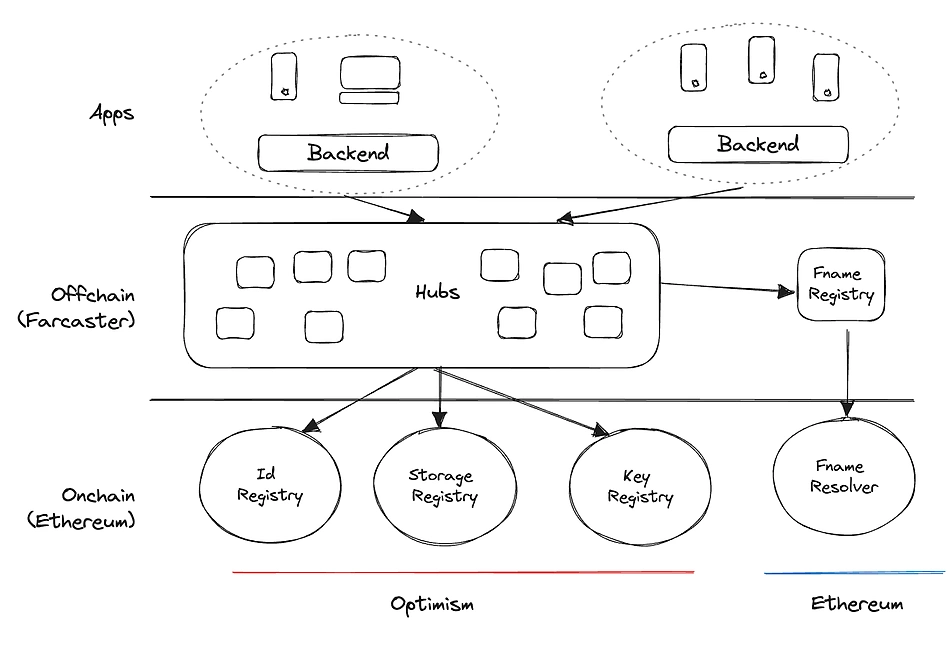
Farcaster's working mechanism utilizes a hybrid architecture, combining on-chain and off-chain systems to provide a consistent and efficient environment. The following is a detailed breakdown of its components:
1. Registry Contracts
Farcaster deploys non-upgradable contracts with a limited lifespan on the Ethereum Layer 2 network (Layer 2 OP Mainnet). These contracts are mainly used for three functions:
ID registration: Generating key pairs linked to newly created Farcaster accounts and their Ethereum addresses.
Storage registration: Renting and tracking the storage units allocated to each account and collecting annual fees.
Key registration: Allowing users to authorize and revoke account ownership, enabling them to write and sign messages on their own behalf.
2. Hubs
Hubs are servers running on regular hardware, providing low-level, high-performance data streams in the network. They are responsible for hashing messages and verifying their signatures to match the registration contracts.
Once verified, all messages are stored in a collection and transmitted between other Hubs on the network to replicate the contained data.
This off-chain server implementation enables fast and reliable data access, supporting real-time application development.
3. Usernames
Farcaster's usernames are similar to user identifiers (handles) in typical social media applications, used to identify or mention accounts. Farcaster supports two types of ENS names that users can link to their accounts:
Fnames: Off-chain ENS names issued for free by Farcaster.
eth names: On-chain domain names controlled by users, supporting applications built on the Ethereum network.
These mechanisms allow users to customize their accounts, provide a personalized user experience, and facilitate connections with other users. Through this hybrid architecture combining on-chain and off-chain operations, Farcaster provides a flexible, efficient, and secure decentralized social media platform for developers and users.
3. Core Mechanism
3.1 Frames
The "Frames" feature of Farcaster is a very crucial innovation in the protocol, allowing users to embed and run small applications in their social media posts. These Frames can greatly enhance the user experience, setting Farcaster apart from other social media platforms.
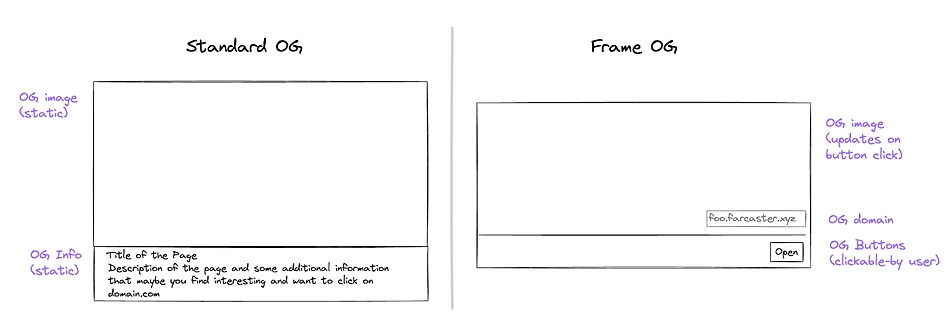
The following is a detailed introduction to Frames:
3.1.1 Concept of Frames
Frames are small applications or plugins running in Farcaster posts. They allow users to directly access various functions and services in social media interactions without leaving the Farcaster platform. These applications can include games, NFT minting tools, news subscription services, and more.
3.1.2 Functions and Applications
Through Frames, users can directly perform various actions within their social media posts:
NFT interaction: Users can mint, showcase, or trade NFTs.
Games: Embed and play mini-games directly in posts.
Content subscriptions: Allow followers to subscribe to newsletters or other media content.
Shopping: Users can directly purchase goods or services within posts.
Social functions: Enhanced interaction options such as voting, surveys, and more.
3.1.3 Technical Implementation
Frames are designed and implemented on the Farcaster protocol, using smart contracts and blockchain technology to ensure the security and reliability of these applications. Each Frame runs as an independent application but is closely integrated with Farcaster's main network, ensuring a seamless user experience and data consistency.
3.1.4 User Experience
Frames improve the user experience on social media platforms as they provide a more interactive and engaging way to consume content. Users do not need to leave Farcaster to other websites or apps to find content or complete transactions, reducing bounce rates and enhancing platform stickiness.
3.1.5 Development and Deployment
Developers can create their own Frames for Farcaster, adding functionality and diversity to the platform. These Frames can be developed and deployed through Farcaster's developer tools and API, allowing developers to contribute new features and services, enriching the community ecosystem.
The introduction of Frames is part of Farcaster's attempt to redefine the way social media interactions are conducted, providing users with unprecedented convenience and interactive experiences by embedding feature-rich applications directly in posts.
3.2 Warpcast
Warpcast is a major application under the decentralized social media protocol Farcaster, and it is the first-ever Farcaster client, tightly integrated with the Farcaster protocol and data. All Warpcast accounts have a Farcaster ID and store their generated content in the Farcaster center. Warpcast is designed as a social platform similar to Twitter, but it offers unique features and advantages using blockchain technology.
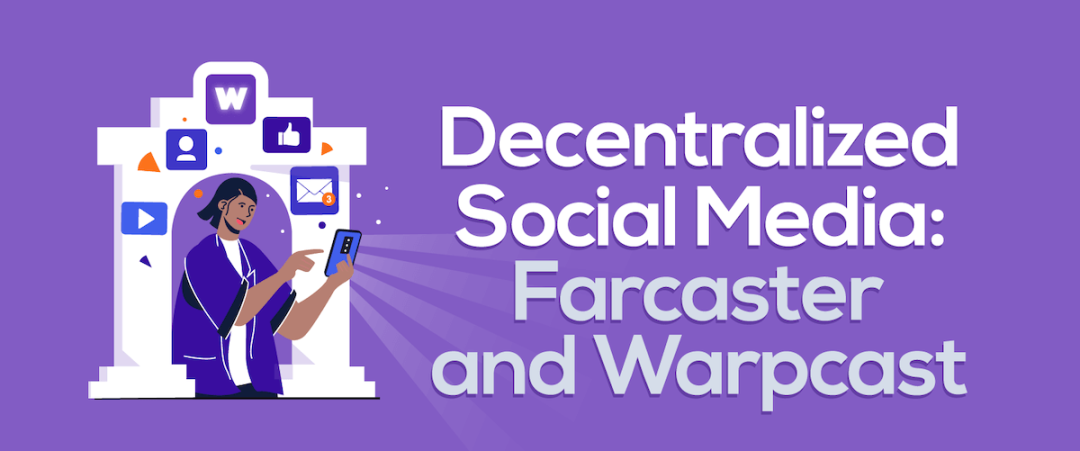
Here are some detailed introductions about Warpcast:
3.2.1 Platform Overview
Warpcast is an interactive social media platform that allows users to post and share short messages (called casts) and interact with users globally. These messages can include text, images, or other media forms. User activities on this platform are recorded and verified using blockchain technology, ensuring transparency and reliability.
3.2.2 Decentralization and User Autonomy
Warpcast emphasizes a decentralized social networking experience. Unlike traditional social media platforms, Warpcast does not rely on centralized servers to store user data but uses blockchain technology to ensure data security and user control. Users can control their data and privacy, and no centralized institution can access or utilize this information.
3.2.3 Features and Interaction
Casts: Users can post short messages containing up to 320 characters.
Reactions: Users can interact with casts by liking, reposting, commenting, and more.
Direct Casts: Similar to direct messaging, allowing users to communicate privately.
Warps: This is a form of currency within Warpcast, used to initiate new channels or connect accounts with other applications and clients.
3.2.4 Frames Functionality
Warpcast supports Frames functionality, allowing the embedding of small applications in posts, such as games, NFT minting, or subscription services. These Frames enable users to perform more functional operations directly within social media posts without leaving the Warpcast platform.
3.2.5 Security and Privacy
By applying blockchain technology, Warpcast provides a secure environment where user identities and transactions are encrypted and anonymized. This not only protects users' personal privacy but also prevents unauthorized third-party access and utilization of data.
3.2.6 Community and Scalability
Warpcast is not just a social media platform; it is also an open community that supports developers and content creators to expand its functionality through developing Frames and other applications. This openness and scalability enable Warpcast to adapt to various needs and innovations, further driving community growth and development.
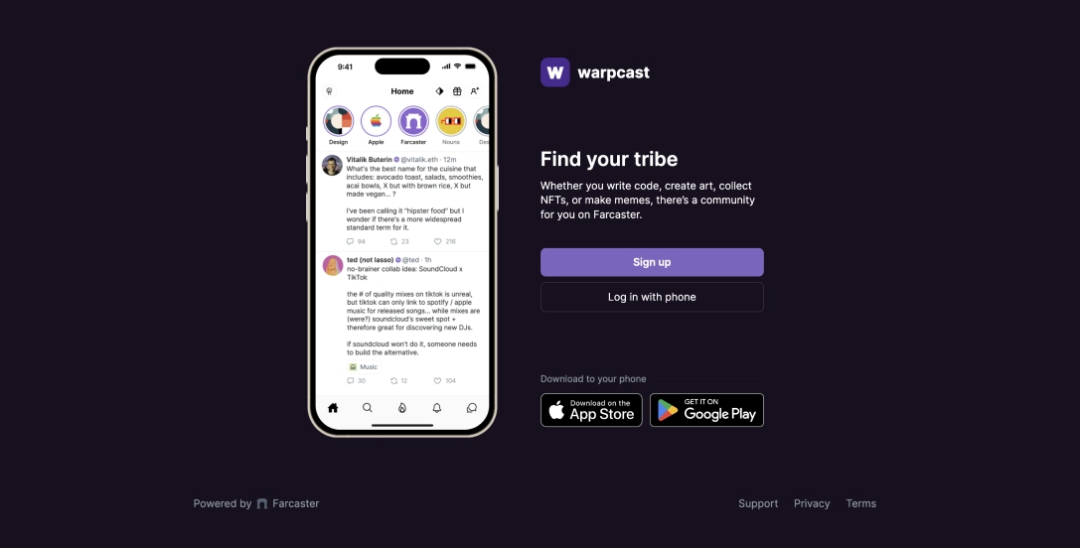
3.2.7 Warps Points
In the Warpcast application, "Warps" is an internal points system designed to reward and incentivize user participation and interaction. This mechanism enhances community activity and user engagement by providing a way to earn and use points.
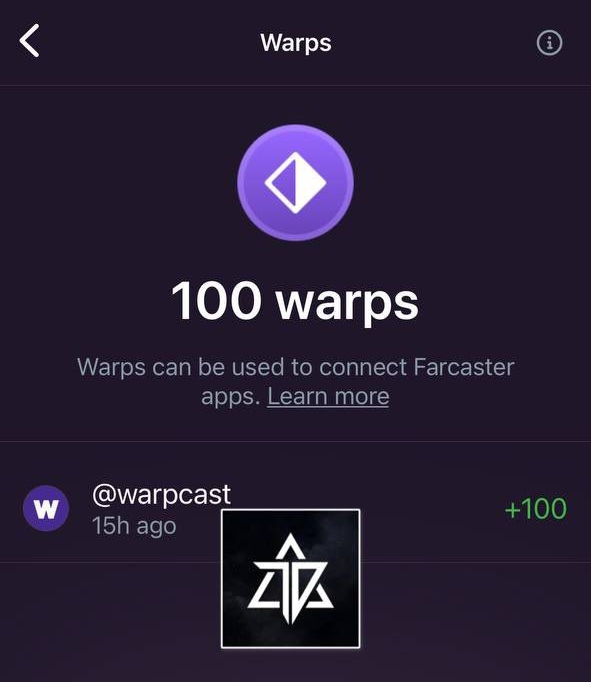
Users can earn Warps points in various ways:
Active Participation: Users can earn Warps points by actively interacting in the application, such as posting content and providing interactive feedback. This encourages users to use the platform more frequently and share valuable content.
Task Completion: Warpcast may set specific tasks or challenges, and users can earn points upon completing these tasks.
Community Contributions: Users who contribute to the community, such as content creators or technical supporters, can earn points through community recognition or direct rewards.
Warps points are not only a reward mechanism but also a practical resource that users can use to access specific features or services:
Payment of Fees: Users can use points to pay for specific activities on Warpcast, such as NFT minting.
Channel Creation: Users can use points to create new social channels, which may revolve around specific themes or interest groups.
Gifting Points: Users can gift points to other users as a reward for their content or interaction.
It is worth noting that while Farcaster and Warpcast advocate decentralization, the Warps points system is centrally managed by the Warpcast team. This means that the issuance, distribution, and rules of the points are determined and controlled by the platform administrators. Unlike typical cryptocurrencies or tokens, Warps points are not issued on the blockchain and do not possess the decentralization and transparency characteristics of blockchain tokens.
3.3 NFT
As of the current information, Farcaster itself has not directly released or detailed its exclusive NFTs (non-fungible tokens). However, considering that Farcaster is a decentralized social media platform, it supports the creation and interaction of NFTs through integrated applications such as Warpcast.
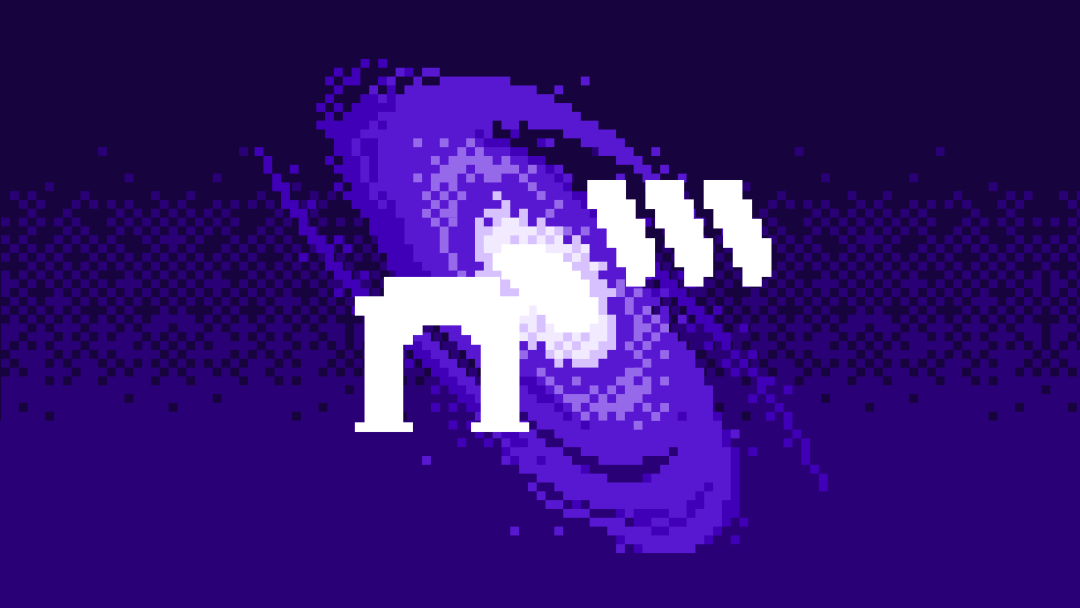
Potential Interaction of Farcaster with NFTs:
- NFT Minting:
Users can directly mint NFTs within the Farcaster ecosystem, especially in applications like Warpcast. This can be achieved through the integrated "Frames" functionality, where users can embed small applications such as NFT minting tools in social media posts.
- Display and Trading:
As Farcaster encourages decentralization and user control, the platform may allow users to showcase their NFT collections in their profiles or posts. Additionally, users may be able to directly sell or trade NFTs on the platform, although this would require additional integration and security measures.
- Social Media Integration:
Using NFTs in social media activities can increase user engagement and the value of content. For example, users may use NFTs as social currency to unlock specific content after receiving a certain level of social interaction (such as likes or comments).
- Empowering Creator Economy:
The tools and platform provided by Farcaster can help content creators and artists directly sell unique digital artworks to fans and collectors through NFTs, establishing a more direct revenue channel.
4. Ecosystem
Farcaster has a growing application ecosystem, including applications of various scales built by independent developers, many of which have become quite advanced and received significant funding support.
Here are some interesting application examples:
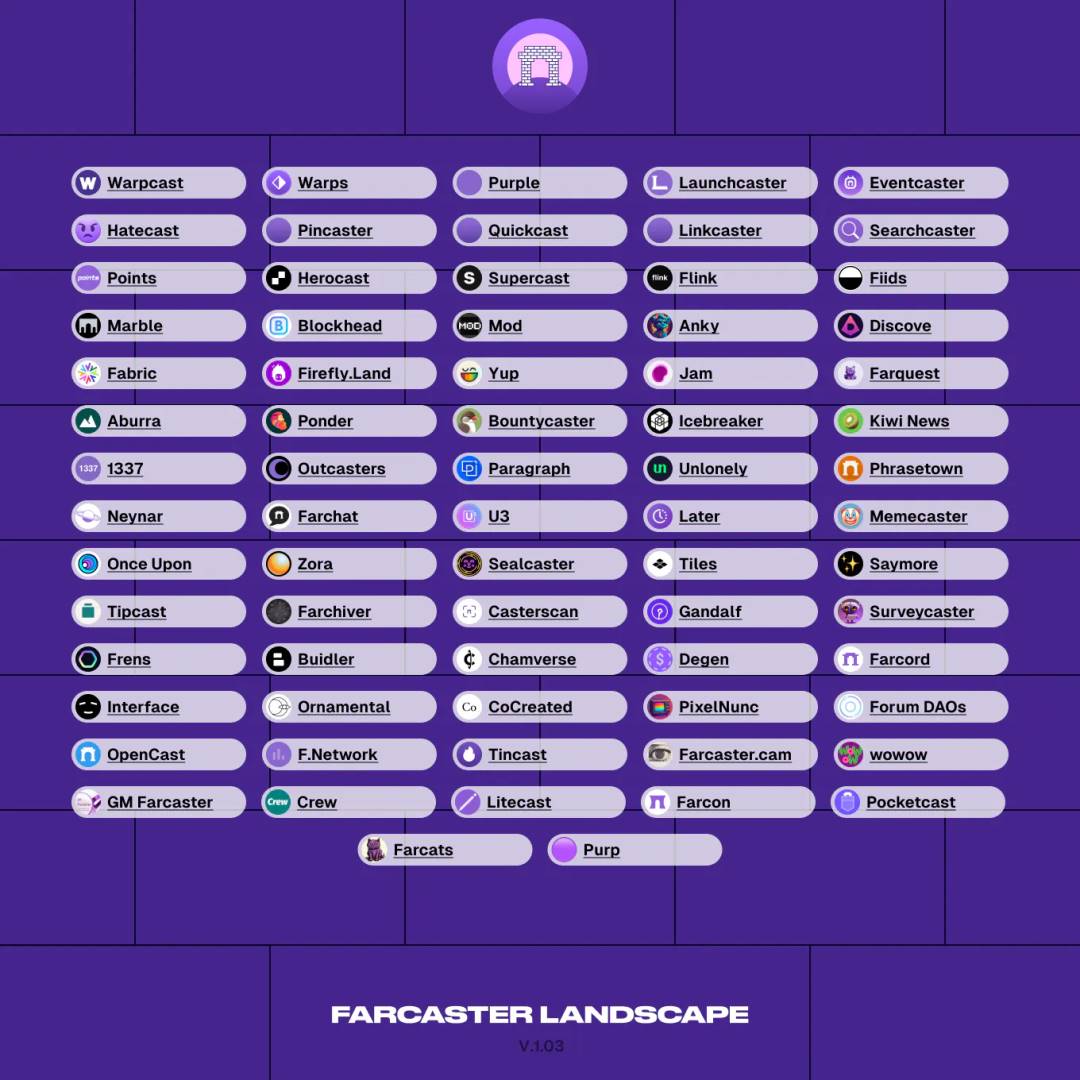
- Icebreaker: A privacy-focused professional network based on Farcaster.
- Seemore: A platform for creators to create personal pages and showcase profiles.
- Paragraph: A Web3-native publishing platform that helps writers build communities around their communications.
- Bountycaster: Allows Farcaster users to create bounties for tasks, which can be accepted by any Farcaster user and paid upon completion.
- Unlonely: A crypto-native live streaming platform with gamified features such as live betting and creating personal channels.
- Supercast: A client similar to Warpcast, providing a slightly different user experience and enhanced UX features.
- Launchcaster: A product release platform for the Farcaster community, similar to Product Hunt.
- Team / Financing Situation Farcaster was initiated by a group of blockchain experts and developers passionate about redefining social media. The journey from concept to development highlights the growing interest in decentralized digital communities, sparked by Elon Musk's acquisition of the social media platform Twitter in 2022. The company is led by two early employees of Coinbase, Dan Romero and Varun Srinivasan.
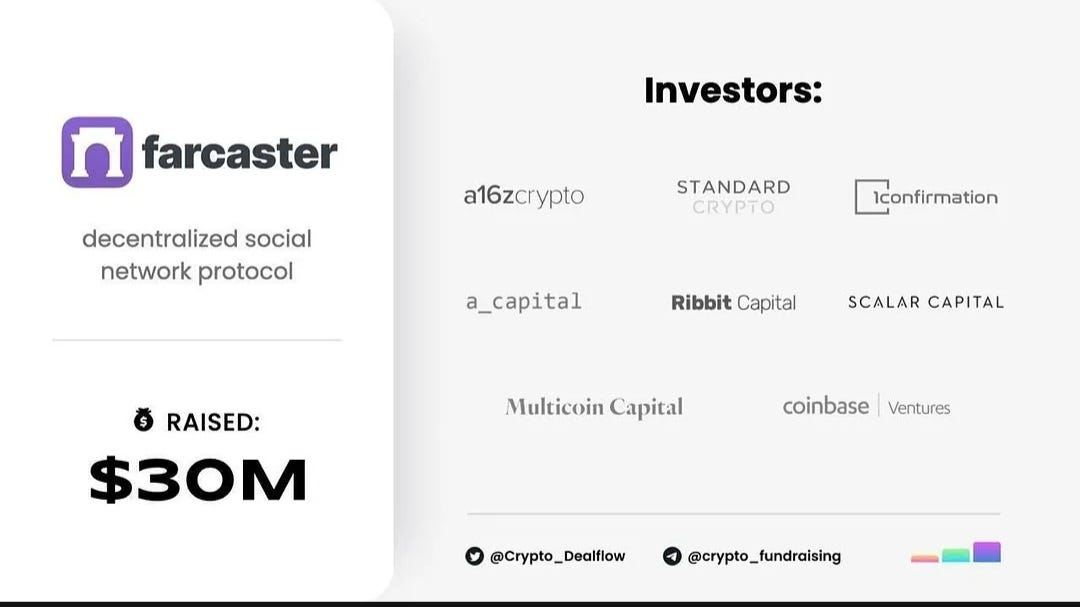
The Farcaster project successfully raised significant funding, totaling $300 million. According to available information, the most recent seed funding round took place on July 13, 2022, with participation from multiple well-known investors, including lead investor Andreessen Horowitz (a16z), Coinbase Ventures, Multicoin Capital, and Balaji Srinivasan, among 19 investors.
- Project Evaluation
6.1 Track Analysis
The Farcaster project belongs to the decentralized social media field, which aims to use blockchain technology to address issues of privacy protection, data ownership, and resistance to censorship faced by traditional social media platforms. Decentralized social media projects typically emphasize user control over their data and interactions on the platform, free from the control of a single centralized entity.
Similar decentralized social media projects include:
- Steemit:
- Features: Steemit is a blockchain-based social media and blogging platform where users can earn the STEEM cryptocurrency by posting content. It encourages high-quality content creation and community participation.
- Technical Foundation: Built on the Steem blockchain.
- Minds:
- Features: Minds is an open-source social networking platform that prioritizes privacy and transparency. Users can earn token rewards through content posting, voting, and commenting.
- Technical Foundation: Uses the Ethereum blockchain for token transactions.
- Mastodon:
- Features: While Mastodon itself is not blockchain-based, it is an open-source decentralized social network platform that allows users to create their own social media spaces on independently operated servers.
- Technical Foundation: Decentralized server network, but not blockchain-based.
6.2 Project Advantages
User Flexibility: Farcaster integrates multiple namespaces, including decentralized identity systems like ENS, allowing users to adopt multiple usernames. This design simplifies the user onboarding process, provides a smooth and user-friendly experience, and offers developers a broader and more diverse user base, enhancing user participation and interaction.
Global State and Data Consistency: By storing user data on powerful network servers called "Hubs," Farcaster ensures data consistency and reliability. Even if a single server fails, data can still be accessed, supporting smooth development processes and optimized user experiences. This unique approach enhances network robustness, streamlines information flow, and promotes a reliable, uninterrupted, and innovative user experience in a decentralized platform.
Data Storage Leasing Model: Farcaster adopts a data storage leasing approach to address storage challenges and optimize network performance. By charging for storage space, the platform minimizes junk information, encourages effective data management, and improves network efficiency. This strategic approach ensures operational smoothness, enhances overall network health, and improves user experience.
6.3 Project Shortcomings
User Adoption Rate: Despite the many advantages decentralized social media platforms like Farcaster offer, such as data control and privacy protection, these platforms often face low user adoption rates. For most users, their social networks are firmly established on mainstream platforms, and transitioning to a new platform may mean losing connections and content. Therefore, attracting and retaining active users may be an ongoing challenge.
Complexity and User-Friendliness: While Farcaster aims to provide a smooth user experience, decentralized applications (DApps) commonly face issues with interface and interaction design that are not as intuitive as centralized applications. Additionally, the complexity of interacting with crypto wallets and blockchain may hinder acceptance among non-technical users.
Performance and Scalability: Although Farcaster is based on Ethereum's Layer 2 solution to optimize transaction speed and costs, overall network performance and scalability are still limited by the constraints of its underlying blockchain technology. Maintaining high performance and low costs in the face of rapidly growing user bases may still pose a technical challenge.
Regulatory and Legal Risks: Decentralized platforms face uncertain legal and regulatory environments in multiple regions globally. Regulations related to data management, user behavior, and cryptocurrency transactions may impact the operation and user participation of Farcaster.
Economic Incentives and Sustainability: While economic incentives (such as rewarding user participation through token rewards) can increase user activity, creating and maintaining a fair and sustainable incentive system is highly complex. Improper incentives may lead to malicious behavior, such as posting spam content and manipulating user interactions.
Conclusion In conclusion, Farcaster, as an innovative decentralized social media platform, offers a new way of online communication through its unique technical architecture and user-centric design philosophy. The platform not only emphasizes user control over data and privacy protection but also incentivizes global developers and content creators to participate through an open-source and community-driven development model. With the continuous advancement of blockchain technology and increasing societal focus on data privacy, the decentralized nature of Farcaster may become a key factor in attracting more users.
免责声明:本文章仅代表作者个人观点,不代表本平台的立场和观点。本文章仅供信息分享,不构成对任何人的任何投资建议。用户与作者之间的任何争议,与本平台无关。如网页中刊载的文章或图片涉及侵权,请提供相关的权利证明和身份证明发送邮件到support@aicoin.com,本平台相关工作人员将会进行核查。




